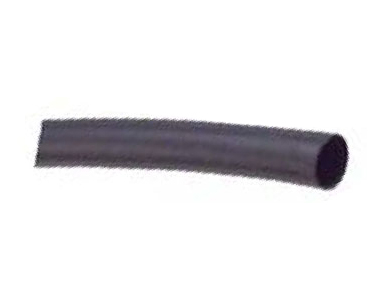
Heat shrink tubing is commonly used in aircraft electrical systems. From the cockpit and cabin to the landing gear and hydraulic bays, many parts of an airplane have electrical systems. They feature an array of wires that transmit and receive electricity. If these wires are compromised, failure may occur.
What Is Heat Shrink Tubing?
Heat shrink tubing is a type of shrinkable plastic that’s designed to insulate and protect electrical wires. Also known simply as heat shrink, it’s essentially a hollow sleeve-like tube.
Common materials used for heat shrink tubing include the following:
- Polyvinyl chloride (PVC)
- Polyolefin
- Polytetrafluoroethylene (PTFE)
- Various elastomeric materials
What Heat Shrink Tubing Is Used For
Heat shrink tubing serves multiple purposes, one of which is insulation. Wires typically have their own insulation. It consists of an outer layer of nonconductive material that helps to contain the electricity. With insulation, electricity will travel through the wire’s conductive interior. For additional insulation or protection, however, heat shrink tubing may be used.
Heat shrink tubing also protects wires from damage. It shields the wire’s conductive interior from moisture, dust and chemicals. Additionally, heat shrink tubing offers strain relief. It reduces mechanical stress on wire joints, further protecting them from damage.
How Heat Shrink Tubing Works
Heat shrink tubing receives its namesake from its ability to shrink when exposed to heat. It fits loosely by default. With a loose fit, of course, it won’t offer much insulation or protection for wires. This is why heat is required when installing heat shrink tubing.
To use heat shrink tubing, you’ll need to first cut it to the appropriate length. You can slide a wire through the piece of heat shrink tubing. Once in place, you can then use a heat gun or similar heat source to shrink it. Exposure to heat will cause the tubing to contract and compress against the wire.
Shrink Ratio Explained
When researching heat shrink tubing, you may come across the term “shrink ratio.” It represents how much a given piece of tubing will shrink.
Shrink ratios consist of two numbers, such as 2:1 or 3:1. A shrink ratio of 2:1 means the tubing will shrink to half its original size, whereas a shrink ratio of 3:1 means it will shrink to one-third its original size. Higher shrink ratios are typically preferred when working with irregular shapes, such as large or bulky wire connectors.



